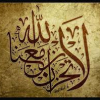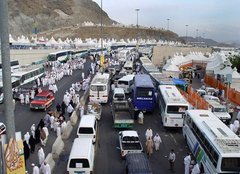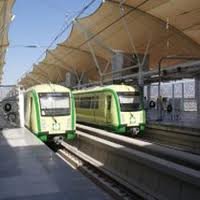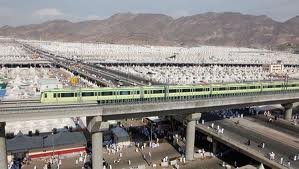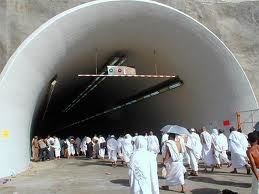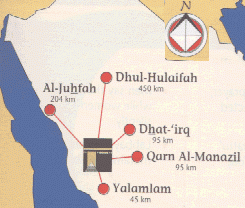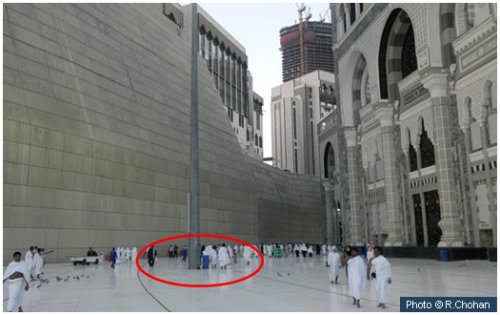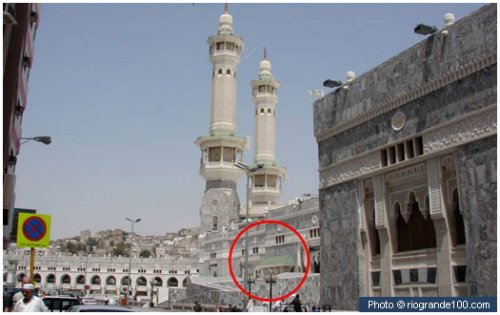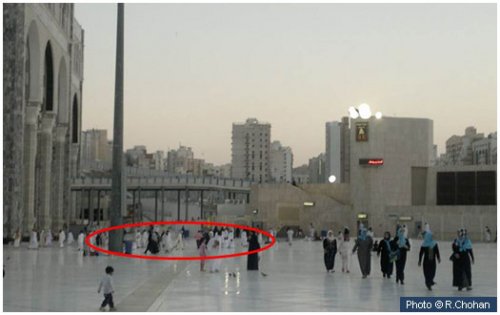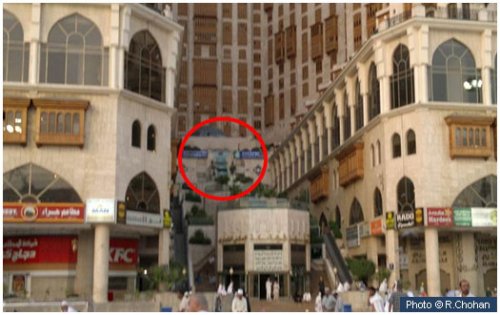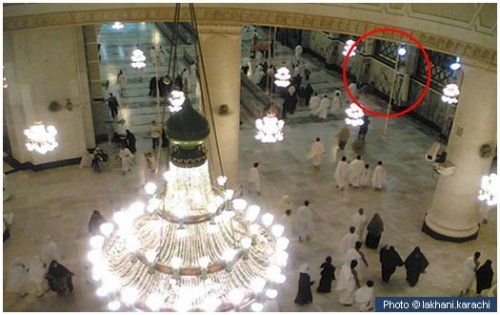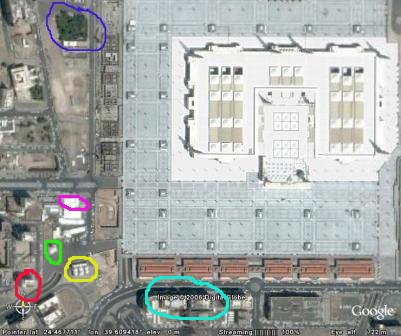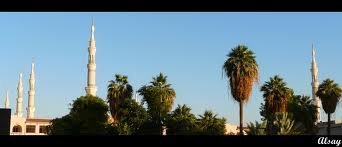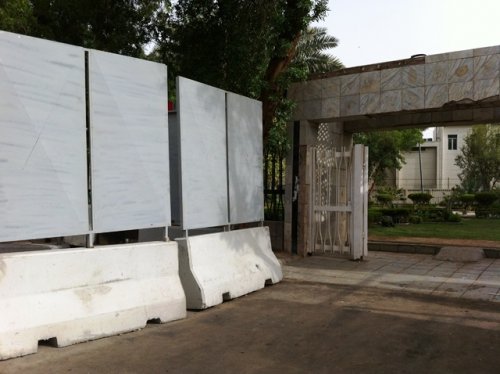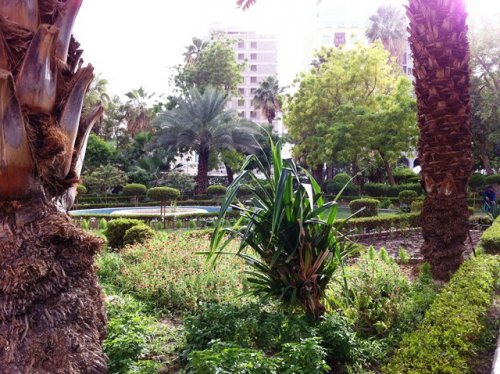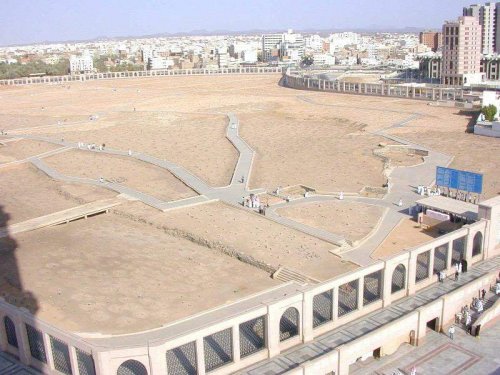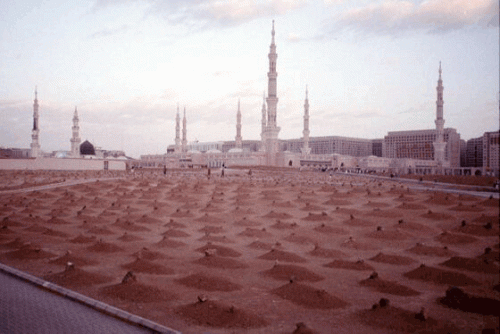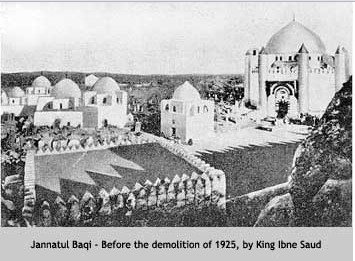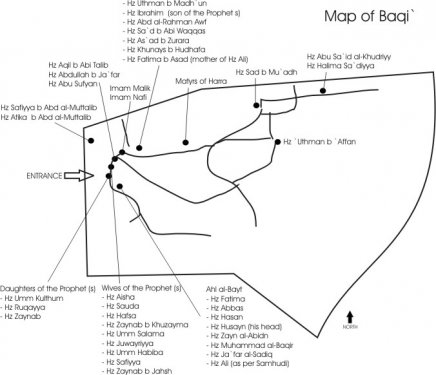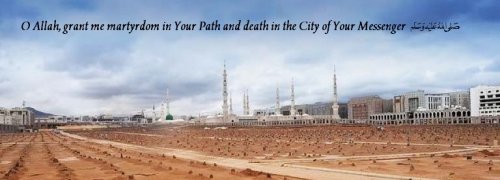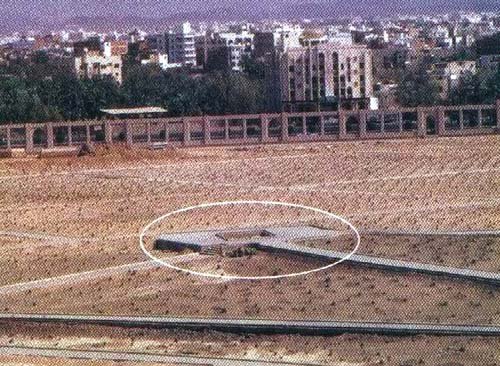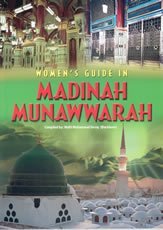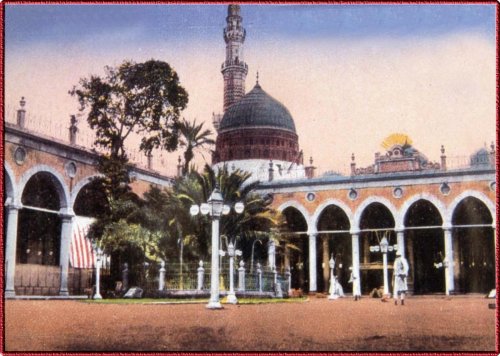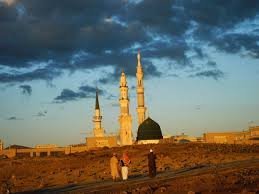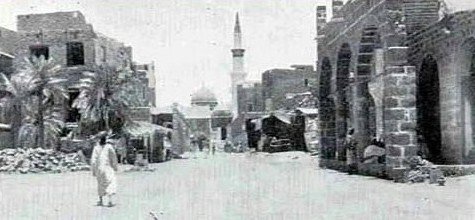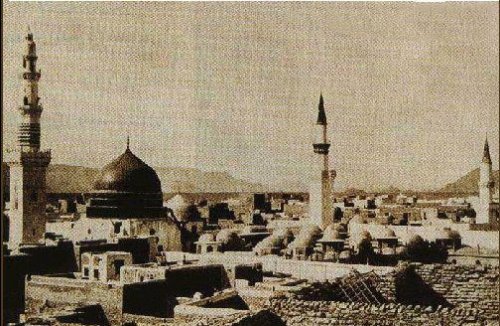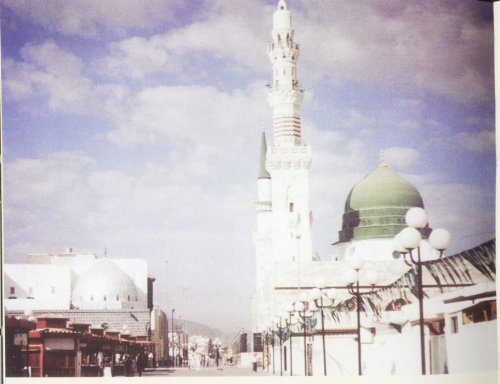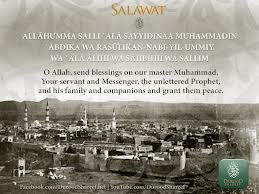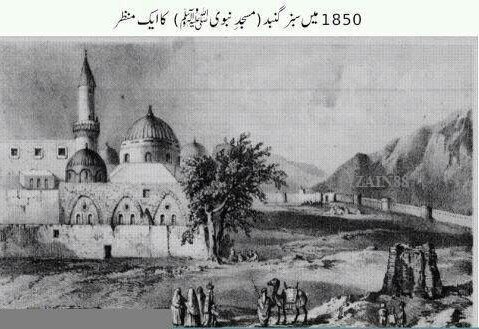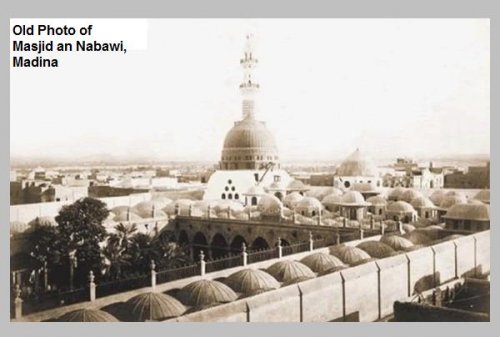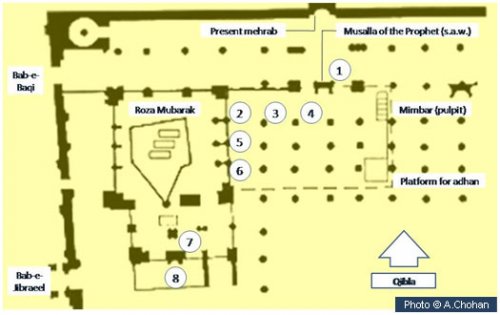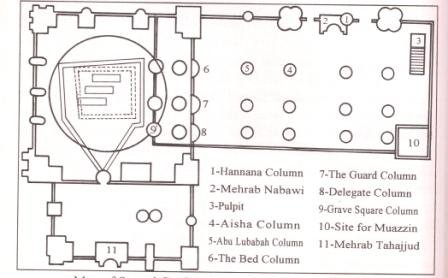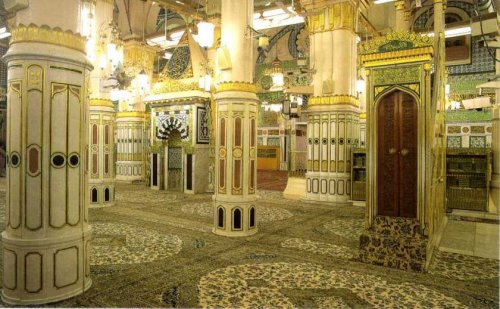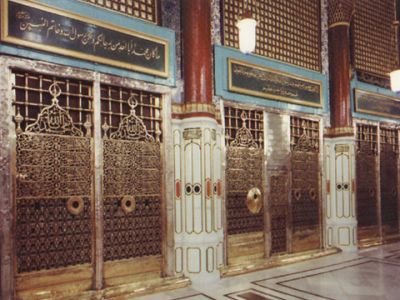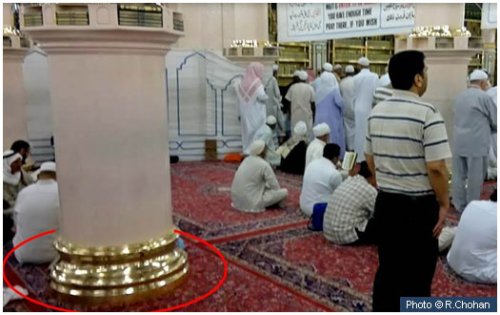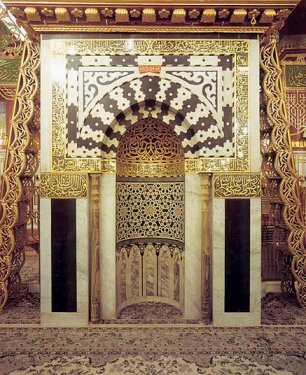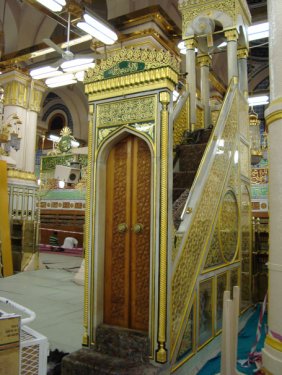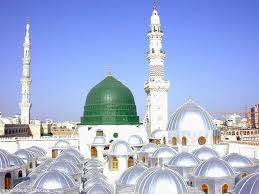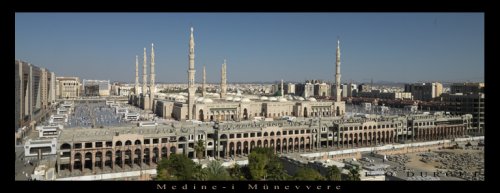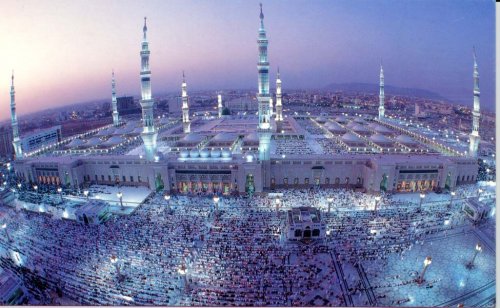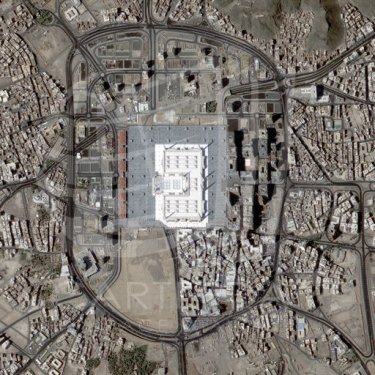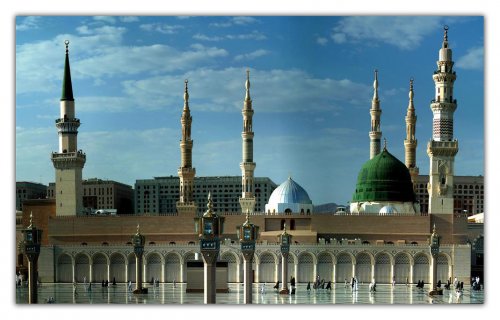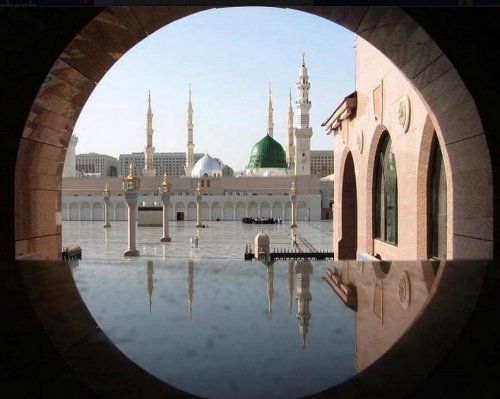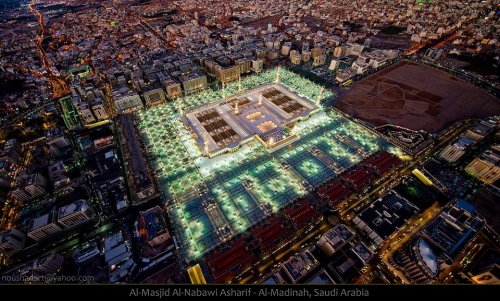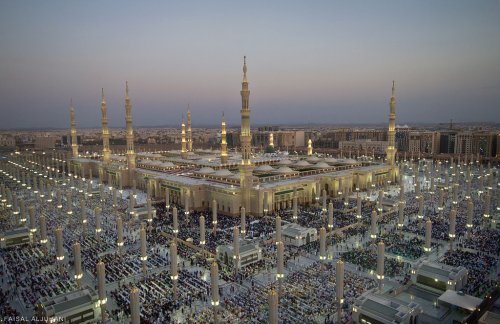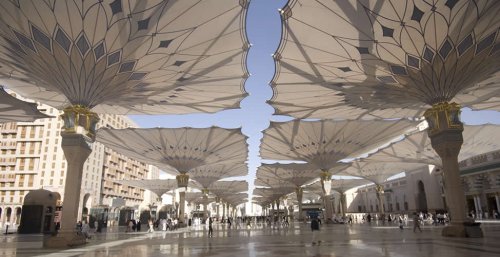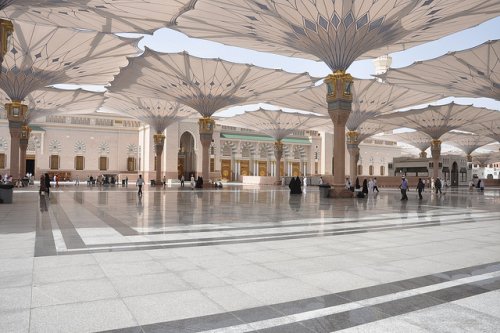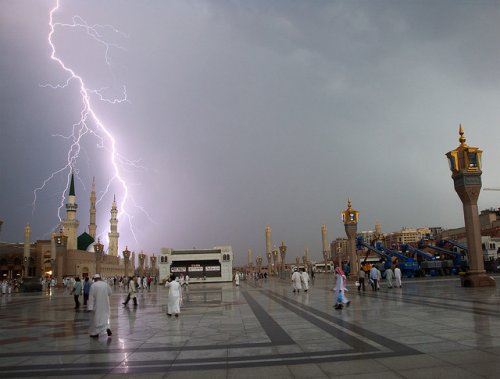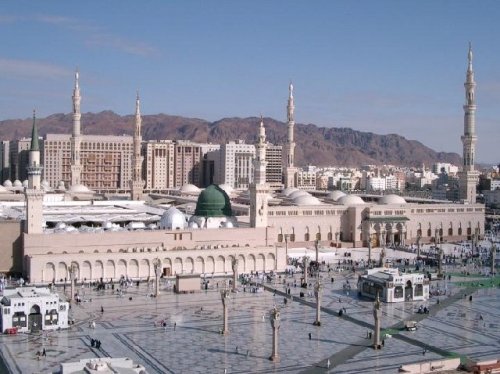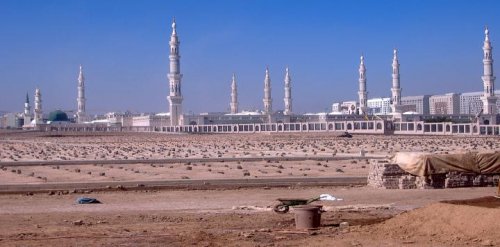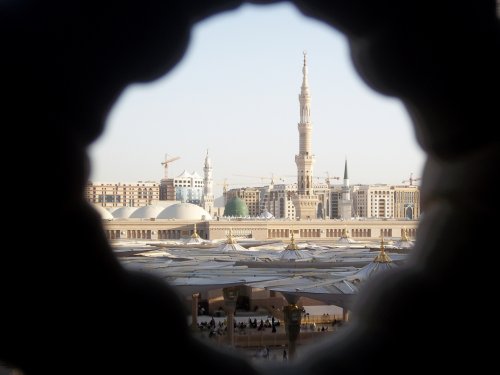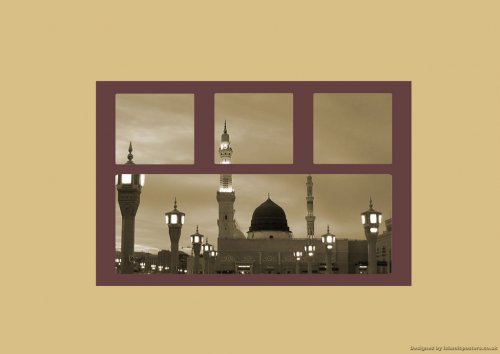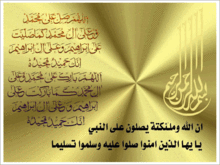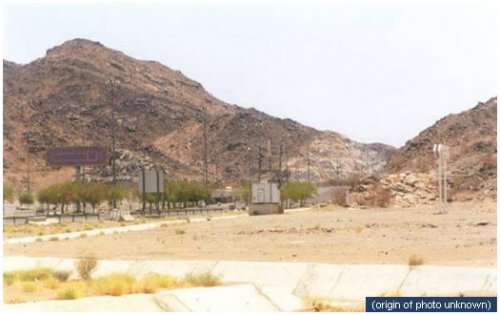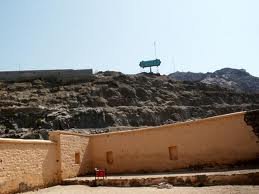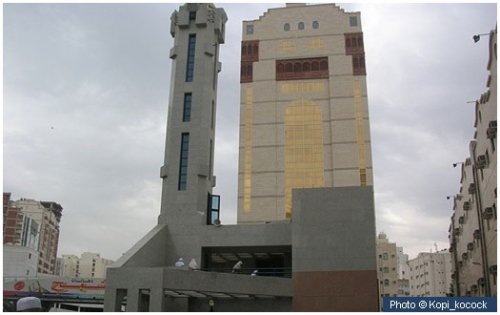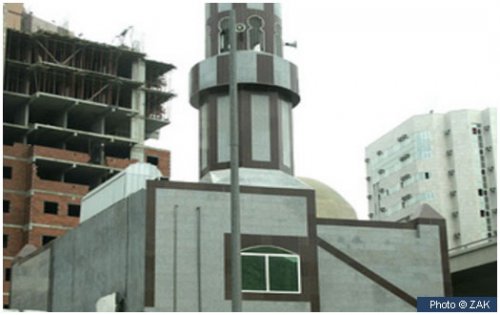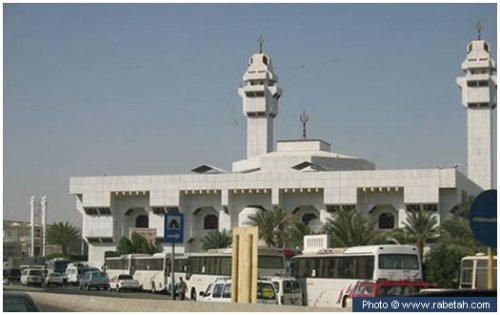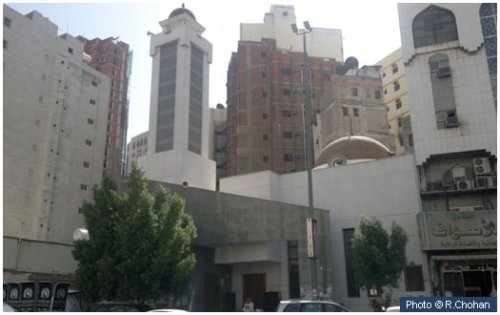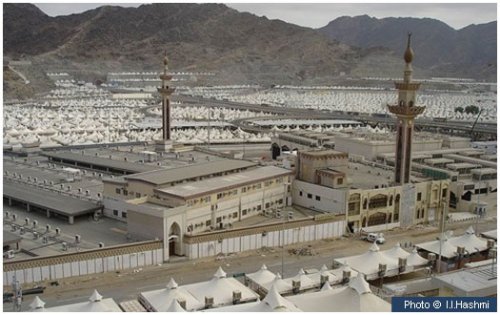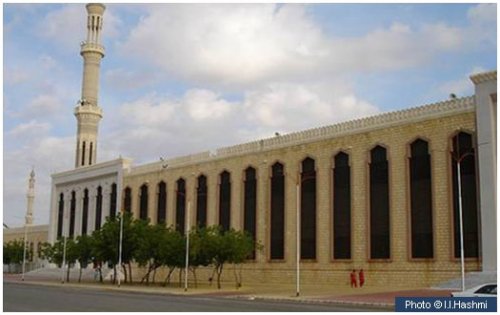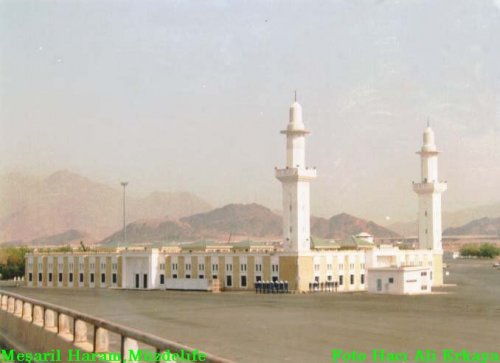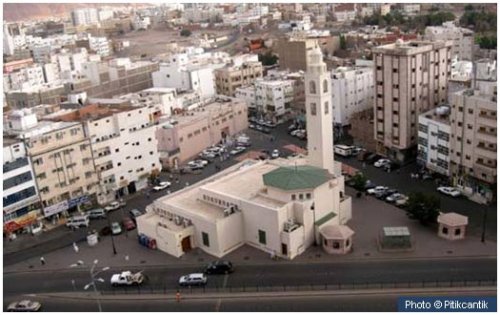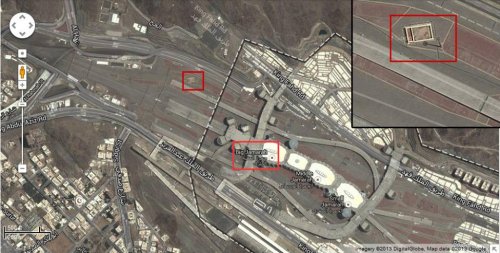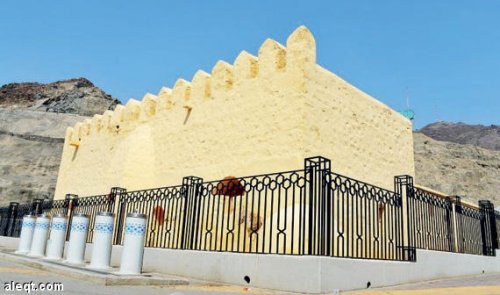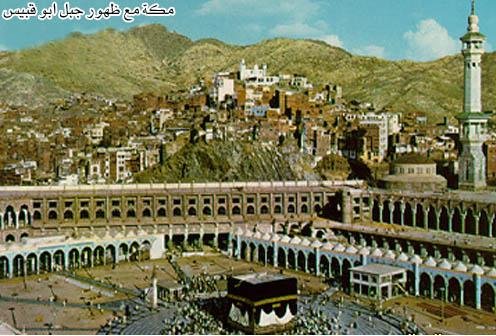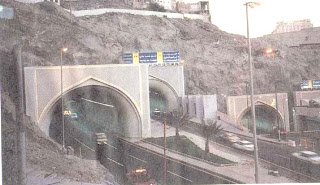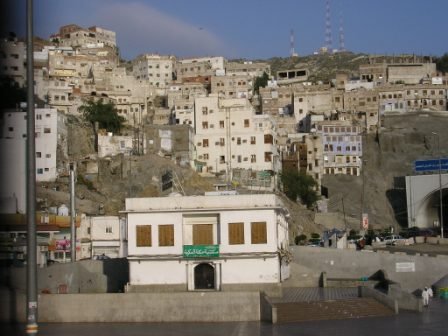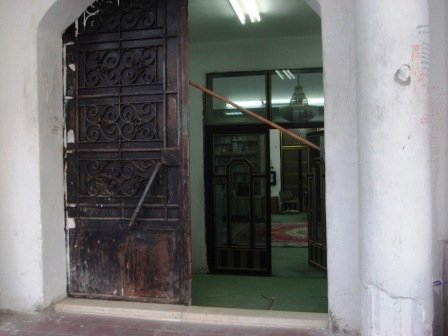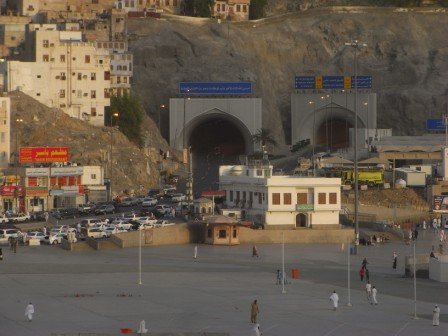-
Posts
8,434 -
Joined
-
Days Won
771
Content Type
Profiles
Forums
Events
Everything posted by ummtaalib
-
Zamzam Studies and Research Centre Unlike other geologic surveys worldwide, the Saudi Geological Survey faces a number of unique responsibilities that arise from its being the major national earth science body of the Kingdom. Foremost of these special responsibilities are the obligations it has towards the well-being and prosperity of the two holiest cities of Islam, Makkah al Mukarramah (Makkah the Holy) and Madinah al Munawwarah (Madinah the Illuminated). The Custodian of the Two Holy Mosques, HM King Abdullah bin Abdulaziz,and his brother, the previous king, HM King Fahd bin Abdulaziz, have taken keen interest in the affairs of Muslims all over the world, and particularly in those matters that affect the Holy Cities. The Zamzam well, which is located within the precinct of the Holy Mosque in Makkah, is sacred to Muslims because of its miraculous origin. Muslims cherish the holy water from the well, and hence Their Majesties’ special interest in and attention to Zamzam in all its aspects. Under a Royal Decree, the Zamzam Studies and Research Center was created by SGS to secure the supply, in terms of quality and quantity, of the holy water of Zamzam. As a result the Center has set up a series of investigative projects to define, quantify, and monitor the water source, and provide the information needed to manage and sustain supplies in the face of increasing demand by residents and pilgrims. The Miracle of Zamzam Well A ccording to Arab historians, the Zamzam Well, except for a few periods when it became dry or was buried under sand, has been in use for around 4000 years. The well marks the site of a spring that, miraculously , had issued forth from a barren and desolate wadi (non perennial stream) where the Prophet Ibrahim (Peace be upon him-pbuh), under Allah's command, had left his wife Hajar and their infant son Ismail (pbuh). In her desperate search for water, Hajar ran seven times back and forth in the scorching heat between the two hills of Safa and Marwa to provide water for Ismail (pbuh), who was dying of thirst. Allah, in His mercy, sent the Angel Gabriel, who scraped the ground, causing the spring to appear. On finding the spring, and fearing that it might run out of water, Hajar enclosed it in sand and stones. The name Zamzam originates from the phrase Zomë Zomë, meaning ‘stop flowing’, a command repeated by Hajar during her attempt to contain the spring water. The area around the spring, which was later converted to a well, became a resting place for caravans, and eventually grew into the trading city of Makkah, birthplace of the Prophet Muhammad (pbuh). Prophet Ibrahim (pbuh) later returned to rebuild the first Bait-ul-Allah (House of Allah), originally build by Adam (pbuh). Because of its square shape, it is called The Ka’ba. It is the holiest Muslim shrine. The Ka’ba now stands in the center of the Holy Mosque, also called Al-Haram. The Zamzam well is located within the Holy Mosque at about 20 m east of the Ka’ba. All able-bodied Muslims with sufficient financial means are obliged to make the pilgrimage to Makkah, known as the Hajj, at least once in lifetime. During the Hajj, pilgrims perform a number of rituals in the Al-Haram and outside Makkah at Muna, Arafat, and Muzdalifa. One of the rituals known as the Umrah, includes Tawaf (seven times circling) of Ka’ba and Sai between the hills of Safa and Marwa, which is to re-enact Hajar’s search for water Umrah can be performed at any time of the year. Millions of Umrah pilgrims visit Makkah throughout the year, the peak season being the month of Ramadan. Muslims drink Zamzam water during their visit and also carry it back home. Structure and hydrogeology of the Well The Zamzam Well is hand-excavated and is about 30.5 m deep, with an internal diameter ranging from 1.08 to 2.66 m. Hydrogeologically, the well lies within Wadi Ibrahim, which runs through the Holy City of Makkah, and taps groundwater from the wadi alluvium and, to a much lesser extent, the underlying fresh bedrock. The well is now housed in a basement room, protected by glass panels that allow a clear view of the well. Electric pumps are used to draw water from the well, replacing the ropes and buckets. No visitor is allowed to enter the Zamzam Well room and surroundings. Outside this room, there was a service area, where cold Zamzam water fountains and dispensing containers were provided for drinking purposes. Recently, the Al-Haram Tawaf area has been extended to cover the entrance to this area and it is no more accessible to pilgrims. Instead, cold Zamzam water fountains and dispensing containers are now placed at the periphery of Tawaf area. The upper 13.5 m of the well is excavated in the sandy alluvium of the Wadi Ibrahim, and the lower 17.0 m in the underlying diorite bedrock. In between lies a 0.5 m thick highly permeable weathered rock. Most of the alluvial section of the well is lined with stone masonry except for the uppermost 1m, which has a reinforced concrete collar.. The weathered rock section is lined with stone and it is this section that provides the main water entry into the well. Research issues and objectives Zamzam Studies and Research Center at SGS is to provide the required scientific solutions for effective monitoring and management of the aquifer feeding the Zamzam well and to ensure the purity and security of supply. The Center is currently focusing on the following aspects of management of the aquifer, the well and the Zamzam supply and distribution system: • Monitoring and managing demand to prevent depletion, • Urbanization of the Wadi Ibrahim catchment and its effect on recharge, • Management of storm drainage in relation to recharge, • Maintaining groundwater movement and quality through building controls, • Upgrading of the Zamzam pumping and storage system, • Optimization of Zamzam supply and distribution, Monitoring and managing demand to prevent depletion With the increasing accessibility of affordable air travel, the number of Muslims visiting the Holy City of Makkah has risen dramatically over the past 3 decades, from around 400,000 per year in the mid 1970’s to over several millions since the mid-1990’s. Water levels in the Zamzam Well were formerly monitored by a simple drum hydrograph, but this has now been replaced by a more sophisticated real-time multi-parameter monitoring system, which makes digital records of water level' electric conductivity, pH, Eh and Temperature. The datalogger is accessible by SGS through the internet and the data can be examined and downloaded without going to the well. A network of other monitoring wells has also been installed throughout Wadi Ibrahim to monitor the response of the entire aquifer system to the recharge and discharge. Some of these wells are fitted with automatic digital water level recorders. . With the increasing number of visitors, demand for Zamzam water was continually increasing. SGS’ task is to estimate sustainable well yield and recommend measures to prevent further increase in demand to ensure that sustainable supply limits are not exceeded. Urbanization of the Wadi Ibrahim catchment and its effect on recharge To sustain groundwater supply from wells, aquifers need to be continually recharged, either from direct infiltration of rainwater or from rivers flowing over the aquifer. In arid climates, where there is no permanent surface drainage, natural recharge is limited to rainfall from occasional, brief storms. Supply can be severely threatened during long dry periods, when water is effectively ‘mined’ from the aquifer with no source of replenishment. The surface area or ‘outcrop’ of the Wadi Ibrahim alluvium covers only 60 square km. Limited recharge of the wadi alluvium aquifer occurs through infiltration of rainwater falling directly on the outcrop, supplemented by run-off from adjacent hillsides. Urban development of Makkah has now extended over the wadi bed, diminishing the already meager amount of rainwater infiltration into the underlying aquifer due to surface sealing and channeling of rainwater into storm drainage systems. Modeling of aquifer recharge is therefore crucial to ensure that supply and demand for Zamzam water is appropriately balanced. The Zamzam Studies and Research Center is therefore assessing and quantifying the effects of urbanization on recharge, and developing recommendations for planning controls to limit further development on the outcrop of the wadi alluvium aquifer. Management of storm drainage in relation to recharge Storm drains are designed specifically to prevent flooding by capturing rainwater falling on sealed urban surfaces such as roads and buildings, and carry the water away into wadis or into safe areas where it can be allowed to flood, infiltrate into the ground or evaporate. The Center has in undertaken intensive modeling of natural drainage patterns with Wadi Ibrahim catchment are in order to define ways and means of harnessing storm water. Maintaining groundwater movement and quality through building controls Makkah is unusual among Saudi Araban cities because of its high proportion of relatively high-rise buildings, some of which are many decades old. High-rise development continues to present a solution to urban expansion over the Wadi Ibrahim catchment are, but the deep foundations required can expose the water table to contamination and also restrict groundwater movement. Strict building controls are therefore required for allowing high rise developments in sensitive areas, indicated by near real-time maps and models of the water table elevation calculated from monitoring well data, and by risk assessments of the likely impact on groundwater quality. Engineering geology maps of Makkah also help to highlight zones of lower development risk. The Zamzam Studies and Research Center aims to present solutions to these complex and inter-related problems through a modern, integrated and multi-faceted approach to water catchment management and conservation. Through these actions, the quality and quantity of supply from the Zamzam Well can continue to be sustained to meet the spiritual needs of the world’s one billion Muslims. Upgrading of Zamzam pumping and storage system In order to manage demand water from Zamzam well is pumped, treated and stored in underground storage tanks a continual basis. Before distribution to consumers and transportation to Madinah Zamzam water is treated by a series of sand filters, micro filters and ultraviolet disinfection. Zamzam Studies and Research Center is engaged in design of upgrading the treatment system. Already, two phases of upgrading have been completed and the third phase is in active consideration. Moreover, the Center strictly follow these activities and ensures strict quality assurance measures. Optimization of Zamzam supply and distribution All pilgrims carry Zamzam water back home usually in plastic containers of 10 or 20 liters size, which they fill themselves from several filling points, situated around the Al-Haram and at a central filling station. But, more commonly they buy the filled containers from roadside venders on the outskirts of Makkah. This distribution system is wanting in hygiene and offsets the efforts of treatment. Therefore, Zamzam Studies and Research Center is in the process of evaluation of the present filling system and design of upgrading that will minimize direct human involvement and discourage peddling by venders. Structure and hydrogeology of the Well The Zamzam Well is hand-excavated and is about 30.5 m deep, with an internal diameter ranging from 1.08 to 2.66 m. hydrogeologically, the well lies within Wadi Ibrahim, which runs through the Holy City of Makkah, and taps groundwater from the wadi alluvium and, to a much lesser extent, the underlying fresh bedrock. The well is now housed in a basement room, protected by glass panels that allow a clear view of the well. Electric pumps are used to draw water from the well, replacing the ropes and buckets. No visitor is allowed to enter the Zamzam Well room and surroundings. Outside this room, there was a service area, where cold Zamzam water fountains and dispensing containers were provided for drinking purposes. Recently, the Al-Haram Tawaf area has been extended to cover the entrance to this area and it is no more accessible to pilgrims. Instead, cold Zamzam water fountains and dispensing containers are now placed at the periphery of Tawaf area. The upper 13.5 m of the well is excavated in the sandy alluvium of the Wadi Ibrahim, and the lower 17.0 m in the underlying diorite bedrock. In between lies a 0.5 m thick highly permeable weathered rock. Most of the alluvial section of the well is lined with stone masonry except for the uppermost 1m, which has a reinforced concrete collar.. The weathered rock section is lined with stone and it is this section that provides the main water entry into the well. Article taken (with Thanks) from Saudi Geological Society Both articles taken from central-mosque.com
-
ZamZam Well, Its Water & Its History Allah Ta'ala has made all living creatures out of water. People require water for almost for everything but not all water carries the same value and significance.Muslims refer to the water of Zamzam as something revered and unique. They crave this mysterious liquid and love to drink it whenever they can. And for those who managed to go to the Hajj, they return home carrying it for thousands of miles as a prized possession and to give as special gift to their friends and families. So what is so special about Zamzam water? In a word: Everything! There is nothing ordinary about it. The miracle of how it came to being in the middle of a desert, its consistency throught out 1000s of years, the beneficial qualities it has, the fact that it never dries up. This water is special. The fact is, this small and only ' 5 ft deep well ' is far away from any other source or body of water. It is self replenishing. It is constantly replenishing itself in order to produce gallons upon gallons of water for the consumption of thirsty pilgrims plus the additional amount that is bottled up and also the amount that is taken as gifts and distributed worldwide to millions. SubhanAllah! Zam zam water has scientifically been proven to contain healing qualities due to its higher content of Calcium and Magnesium Salts and also natural fluorides that encompass a germicidal action. It is also an established scientific fact that pools or water wells tend to grow vegetation such as algae-- especially in warm climates. Amazingly this is not the case in the well of Zamzam. It has remained free from bilogical contaminations. History of Zamzam Water Zamzam is the name of a famous well in al-Masjid al-Haraam [the Sacred Mosque in Makkah], which is thirty-eight cubits away from the Ka’bah. It is the well from which Allah quenched the thirst of Ismaa’eel the son of Ibraaheem (peace and blessings of Allah be upon them both) when he was an infant. His mother(Haajra(peace and blessings of Allah be upon her) looked for water for him, but could not find any. She climbed to the top of Mount al-Safaa, praying to Allah to help her and give her water for Ismaa’eel, then she climbed to the top of Mount al-Marwah and did the same. Allah sent Jibreel(peace and blessings of Allah be upon him) , and he struck the earth, and water appeared. The scholars (may Allaah have mercy on them) agreed that it is mustahabb (recommended) for pilgrims on Hajj and ‘Umrah in particular, and for all Muslims in general, to drink Zamzam water, because of the saheeh hadeeth in which the Prophet (peace be upon him) is reported to have drunk the water of Zamzam. (Reported by al-Bukhaari, 3/492). According to the hadeeth of Abu Dharr (may Allaah be pleased with him), the Prophet (peace be upon him) said concerning the water of Zamzam, “It is a blessing, and it is food that satisfies.” (Reported by Muslim, 4/1922). Al-Tayaalisi added, in a version that he narrated: “and a cure for the sick. – but this is when he drinks it with faith and sincerity, as proven in the hadeeth of Abu Dharr al-Ghifaari who stayed in Makkah for a month without any nourishment except Zamzam water. Al-‘Abbaas ibn ‘Abd al-Muttalib (may Allaah be pleased with him) said: “The people used to compete over Zamzam during the time of Jaahiliyyah(ignorance). People who had children used to bring them and give them to drink, and this was their early-morning victuals. We used to used to think that it was a help for people who had children.” Al-‘Abbaas said: “During the Jaahiliyyah, Zamzam was known as Shabaa’ah (satisfaction).”Al-‘Allaamah al-Abbi (may Allaah have mercy on him) said: “(The water) is for whatever purpose it is drunk for, and Allaah made it food and drink for Ismaa’eel and his mother Haajar.”Ibn al-Mubaarak entered Zamzam and said, “O Allaah, Ibn al-Mu’ammal told me, from Abu’l-Zubayr from Jaabir that the Messenger of Allah (peace be upon him) said: ‘The water of Zamzam is for whatever purpose it is drunk for,’ so, O Allaah, I am drinking it (to quench) my thirst on the Day of Resurrection.” Virtues and characteristics of the water of Zamzam The two angels washed the heart of the Prophet (peace be upon him) when he was a child, after they had taken it out, then they put it back. Al-Haafiz al-‘Iraaqi (may Allaah have mercy on him) said: “The reason why the Prophet’s chest was washed with Zamzam water was to make him stronger so that he could see the kingdom of heaven and earth, and Paradise and Hell, because one of the special qualities of Zamzam is that it strengthens the heart and calms the soul. The report about the chest of the Prophet (peace be upon him) being washed with the water of Zamzam is proven in the hadeeth of Abu Dharr (may Allaah be pleased with him), who reported that the Prophet (peace be upon him) said: “My roof was opened when I was in Makkah, and Jibreel (peace be upon him) came down and opened my chest, then he washed it with Zamzam water. Then he brought a gold basin full of wisdom and faith, poured it into my chest, and closed it up again. Then he took me by the hand and ascended with me into the first heaven.” (Reported by al-Bukhaari, 3/429). It is sunnah to drink one’s fill of Zamzam water and to quench one’s thirst.The fuqaha have mentioned the etiquette that is mustahabb (recommended) when drinking Zamzam water, such as facing the Ka’bah, saying Bismillah, pausing to take a breath three times, drinking one’s fill, praising Allaah after one finishes As regards the hadeeth of Ibn ‘Abbaas (may Allaah be pleased with him), who said, “I gave the Prophet (peace and blessings of Allaah be upon him) Zamzam water to drink whilst he was standing,” (reported by al-Bukhaari, 3/492), it is taken to mean that it is permissible to drink zamzam whilst standing; showing the utmost respect. The scholars also recommended that the person who drinks Zamzam water should sprinkle some of it on his head, face and chest, make lots of du’aa’ when drinking it, and to drink it for a purpose that will benefit him in this world or the next, because of the hadeeth in which the Prophet (peace and blessings of Allaah be upon him) said: “The water of Zamzam is for whatever purpose it is drunk for.” (Reported by Ibn Maajah, 2/1018; see Al-Maqaasid al-Hasanah by al-Sakhaawi, p. 359). It was reported that when Ibn ‘Abbaas (may Allaah be pleased with him) drank from the water of Zamzam, he said: “O Allaah, I ask you for beneficial knowledge, plentiful provision and healing from every disease.” Al-Daynoori reported that al-Humaydi said: “We were with Sufyaan ibn ‘Uyaynah, and he told us the hadeeth about the water of Zamzam being drunk for whatever purpose it is drunk for. A man got up and left the gathering, then he came back and said, ‘O Abu Muhammad, is the hadeeth which you told us about the water of Zamzam saheeh?’ He said, ‘Yes.’ The man said, ‘Just now I drank a bucket of Zamzam so that you would tell me one hundred hadeeths.’ Sufyaan said, ‘Sit down,’ so he sat down and he told him one hundred hadeeths.” Some fuqaha’ recommended that people should take some Zamzam water back with them to their countries, because it is a cure for those who seek healing. ‘Aa’ishah(R.A.) reported that she took Zamzam water home with her in bottles, and said, “The Messenger of Allaah (peace and blessings of Allaah be upon him) took some of it away with him, and he used to pour it on the sick and give it to them to drink.” (Reported by al-Tirmidhi, 4/37). Al-Haafiz al-Sakhaawi (may Allaah have mercy on him) said in Al-Maqaasid al-Hasanah: “Some people said that the virtue (of Zamzam water) remains only so long as it is in its place (of origin), and that when it is taken away,it changes. This is an idea that has no basis. The Prophet (peace and blessings of Allaah be upon him) wrote to Suhayl ibn ‘Amr: “If my letter reaches you at night, do not wait until morning, and if it reaches you during the day, do not wait until evening, to send me some Zamzam water.” He sent him two containers full, and at that time he was in Madeenah, before the Conquest of Makkah. This hadeeth is hasan because of corroborating evidence. ‘Aa’ishah also used to take Zamzam water away with her, and she reported that the Prophet (peace and blessings of Allaah be upon him) used to do this; he used to carry it in small vessels and buckets, and pour it onto the sick and give it to them to drink. Whenever a guest visited Ibn ‘Abbaas he would honour him by giving him Zamzam to drink. ‘Ata’ was asked about taking Zamzam water away, and he said: “The Prophet (peace be upon him), al-Hasan and al-Husayn all took it away with them.”And Allaah knows best. (See: Fath al-Baari,3/493; al-Mughni, 3/445; Nihaayat al-Muhtaaj, Shifa’ al-Gharaam bi Akhbaar al-Balad al-Haraam, by al-‘Iraaqi, 1/258) Ibn al-Qayyim (may Allaah have mercy on him) said: Myself and others tried seeking healing with Zamzam water and saw wondrous things. I sought healing with it from a number of illnesses, and I was healed by the permission of Allaah. I saw someone who nourished himself with it for a number of days, half a month or more, and he did not feel hunger; he performed Tawaaf along with the other people just as they did. And he told me that he consumed nothing but Zamzam water for forty days and he had the strength to have intercourse with his wife, to fast and to perform Tawaaf numerous times. (Zaad al-Ma’aad, 4/319, 320). Shaykh Ibn ‘Uthaymeen (may Allaah preserve him) said:So you should have the intention of what you want to gain by drinking this water. He should drink his fill, ie. fill his stomach with it until it is filled to the ribs, because this water is good. A hadeeth has been narrated concerning this: the difference between the believers and the hypocrites is drinking one’s fill of Zamzam water.(Narrated by Ibn Maajah) It was reported in Saheeh Muslim that the Prophet (peace and blessings of Allaah be upon him) said to Abu Dharr, who had stayed near the Ka’bah and its coverings for forty days and nights with no food or drink other than (Zamzam): “How long have you been here?” Abu Dharr said: “I have been here for thirty days and nights.” The Prophet (peace and blessings of Allaah be upon him) said, “Who has been feeding you?” He said, “I have had nothing but Zamzam water, and I have gotten so fat that I have folds of fat on my stomach. I do not feel any of the tiredness or weakness of hunger and I have not become thin.” The Prophet (peace and blessings of Allaah be upon him) said: “Verily, it is blessed, it is food that nourishes.” (Narrated by Imaam Muslim, 2473). Some incidents relating to the Miracles of ZamZam Yusria Abdel-Rahman Haraz said that she was affected by a ulcer in her eye. It affected her by a severe headache which could not be cured by tablets. She was about to become blind in the affected eye. She went to a famous doctor who suggested to give her an injection which will stop the headache but it will also dysfunction the affected eye and consequently she will loose the sight in the affected eye. Mrs.Yusria was confident of the mercy of Allah. She thought of performing Umra and supplicated to Allah to cure her. She come to Makkah and performed Tawaf, there were not many people and the areas not crowded, therefore, she could be with the Zamzam water for long time. She washed her eyes. When she came back to the hotel she found that her affected eyes was cured and the ulcer disappeared. This event proves that it is a confirmation of the Hadeeth which says, “Zamzam water fulfils the purpose for which it has been drunk, if you drink it for getting cured Allah cures you, if you drink it for stomach satisfaction Allah will satisfy you and if you drink it for quenching thirst Allah will quench your thirst.” [Refer to El-Dar Gatni and El-Hukm and Zad] There are many of such events, which proves the truth of what Prophet Muhammed(sallallahu alaiyhi wassallam) said and the holy nature of Zamzam water. Dr. Farooque Antar tells his own story. He says that he had been affected by a stone in his ureter and the doctor could not remove or destroy it without a surgical operation. But he postponed the operation two times. Meanwhile he performed Umra and supplicated to Allah to cure him without undergoing operation. He drank from Zamzam water and prayed two Rakaats. Then he felt a benching in his ureter and hurried to relieve himself, only to see the stone come out and he was cured without undergoing a surgical operation. The doctors who were treating Dr. Farooque were surprised at this. A man from Yemen was fond of reading Quran from a small Mushaf. As he became old he found that he couldn’t read Quran easily from that book because his sight was becoming weak. He heard about the water of Zamzam and its advantage of fulfilling the purpose for which it has been drunk. He came to Haj and he drank from Zamzam. He started reading from that small Mushaf of Quran easily and without any sight problems. He achieved what he wanted because he was confident of that and had deep faith in the saying of the Prophet(sallallahu alaiyhi wassallam), “The water of Zamzam fulfils the purpose for which it has deep drunk” He was also confident and had deep belief in the Quranic sign in which Allah says, “When my servants ask thee concerning me, I am indeed close (to them): I listen to the prayer of every supplicant when he collect on me, let them also with a will listen to my call, and believe in Me. That may walk in the right way”. [2:186] Source: “You ask about the scientific miracles of Quran an Sunna and Shaikh Zindani answers” By Shaikh Abdel Majeed El Zindani Some Ahadeeth about the Zamzam Water: The Prophet (peace and blessings of Allaah be upon him) said: “The best water on the face of the earth is the water of Zamzam; it is a kind of food and a healing from sickness.” (Saheeh al-Jaami’, 3302). It was reported that the Prophet (peace and blessings of Allaah be upon him) drank it, did wudoo’ with it and poured it on his head. He used to carry Zamzam water in small vessels and large containers in order to pour it on the sick and give it to them to drink. (al-Silsilat al-Saheehah, 883). One of the Sahaabah said: we used to call it al-Shabbaa’ah (satisfying) and it helped us to take care our families (ie. it was filling and helped them to do without food, it was also sufficient to nourish children). (al-Silsilat al-Saheehah li’l-Albaani, 2685). The Messenger of Allaah (peace and blessings of Allaah be upon him) said: “The water of Zamzam is for whatever it is drunk for.” (Narrated by Ibn Maajah) The Messenger of Allah, salallahu alayhe wa sallam has said:" The most sublime of all earthly waters is that of zamzam; therein one finds food for the hungry and medicne for the ill." [ At- Tabarani ] "Zamzam water is what one intends to drink it for. When one drinks it to be healed, Allah heals him; when one drinks it to be full, Allah makes him full; and when one drinks it to quench his thrist, Allah quenches it. " [ Ahmad, and Ibn Majah] Since Zamzam water serves whatever purpose and intention for which it is drank; provided it is with sincerity: The scholars and the righteous have tried this and they drank from it with the intention of fulfilling their needs and seeking cure for the sick or relief from poverty or catastrophe and surely Allah eased for them achieving their needs. So next time when one gets the opportunity to drink Zamzam, one should grab the opportunity to pray for: a healthy body, sharp mind, forgiveness for sins, life in Jannah after death, an honorable death on the day of Jummah, and all one's physical and spiritual needs of this world and Hereafter. Article taken (with Thanks) from Al-Islah Publications
-
To Mina & Back to Makkah during Hajj By Road Thousands stuck in traffic jams Or Walkies through the tunnels Tunnel Air Blowers Easier Maybe? Mashair railway ih Hajj Maybe Not.... Thursday 22 August 2013 A SR500 million damages suit filed against Makkah’s Mashaer Railway was recently withdrawn after the parties reached an out-of-court settlement. Haj service companies had previously filed a suit against Mashaer Railway, which transports pilgrims to Arafat and Al-Jamarat Bridge, for the delay in its services and the inconveniences caused to a large number of pilgrims during the last Haj. Around 125 companies withdrew their suit after the railroad company promised the problem would not recur this time. “The settlement terms stipulate that the train services must operate without disruptions or delays during this Haj. However compensation for the damages was not included,” a local daily quoted an informed source on Tuesday as saying. The case was filed at the Makkah Administrative Court, which closed the case after the settlement was reached in the presence of the representatives from the Haj companies and the railroad company. http://www.arabnews.com/news/462075 InshaAllah better service in the future!
-
The Meeqaat There are five places some distance from the Holy City of Makkah which pilgrims must not cross before they are in a state of Ihraam if they intend to enter al Masjid al Haram for Umrah or Hajj. These points or stations are called the Meeqaat.
-
House of Abu Jahal This spot, just outside the present Masah is believed to be the approximate location of the house of Abu Jahal. Abu Jahal was a relative of the Prophet (peace and blessings of Allah be on him) and one of the worst enemies of Islam. He was described by the Prophet (peace and blessings of Allah be on him) as the ‘Fir’awn’ of this Ummah.
-
Darun Nadwah This photo, which is north-west of the Ka’bah, shows the approximate place where the Darun Nadwah (Assembly House) was located. The house functioned as a house of parliament for the Quraysh and it was from here that they plotted to kill the Prophet (peace and blessings of Allah be on him). Note that this area is located in the new expansion project of the Haram.
-
House of Khadija (may Allah be pleased with her) This is the approximate region, outside the Marwah exit, where the house of Ummul Mu’mineen Khadija (may Allah be pleased with her) was located. It was here that the Prophet (peace and blessings of Allah be on him) lived from the time of his marriage to her until he emigrated to Madinah. House of Abu Bakr (may Allah be pleased with him) This is the approximate place where the house of Abu Bakr (may Allah be pleased with him) was located in Makkah and from where Hijrah to Madinah commenced. It is in the Makkah Towers Hotel block, where a masjid (Masjid Abu Bakr) has been built on the 4th floor.
-
Daarul Arqam This area, at the foot of Mount Safa was the approximate area where Daarul Arqam (The house of Arqam) was located. It was here in the initial period of Islam that the Prophet (peace and blessings of Allah be on him) secretly preached Islam. The house belonged to a Sahabi named Arqam bin Abu Arqam (may Allah be pleased with him). For some time after the Prophet (peace and blessings of Allah be on him) proclaimed his Prophethood, this house was the secret centre of propagation. It was here that the Muslims gathered to perform salat and to learn about Islam. As it was a short walk away from the Ka’bah and its bustling crowds, the pagans who lived nearby did not take notice of the many people who used to gather here.
-
Waadi Al-Muhassab It is Mustahab (desirable) for pilgrims to stop at Al-Muhassab after leaving Mina. It is in Makkah on the way to Mina and it is where Allah's Messenger sallallaahu 'alayhi wasallam stopped. Narrated Al-Qasim bin Muhammad (RA): ' Aisha (RA) said, "We set out with Allah's Apostles in the months of Hajj, and (in) the nights of Hajj, and at the time and places of Hajj and in a state of Hajj. We dismounted at Sarif (a village six miles from Mecca). The Prophet (ﷺ) then addressed his companions and said, "Anyone who has not got the Hadi and likes to do Umra instead of Hajj may do so (i.e. Hajj-al-Tamattu) and anyone who has got the Hadi should not finish the Ihram after performing ' Umra). (i.e. Hajj-al-Qiran). Aisha (RA) added, "The companions of the Prophet (ﷺ) obeyed the above (order) and some of them (i.e. who did not have Hadi) finished their Ihram after Umra." Allah's Apostle (ﷺ) and some of his companions were resourceful and had the Hadi with them, they could not perform Umra (alone) (but had to perform both Hajj and Umra with one Ihram). Aisha (RA) added, "Allah's Apostle (ﷺ) came to me and saw me weeping and said, "What makes you weep, O Hantah?" I replied, "I have heard your conversation with your companions and I cannot perform the Umra." He asked, "What is wrong with you?' I replied, ' I do not offer the prayers (i.e. I have my menses).' He said, ' It will not harm you for you are one of the daughters of Adam, and Allah has written for you (this state) as He has written it for them. Keep on with your intentions for Hajj and Allah may reward you that." Aisha (RA) further added, "Then we proceeded for Hajj till we reached Mina and I became clean from my menses. Then I went out from Mina and performed Tawaf round the Ka'ba." Aisha (RA) added, "I went along with the Prophet (ﷺ) in his final departure (from Hajj) till he dismounted at Al-Muhassab (a valley outside Mecca), and we too, dismounted with him." He (ﷺ) called ' Abdur-Rahman bin Abu Bakr (RA) and said to him, ' Take your sister outside the sanctuary of Mecca and let her assume Ihram for ' Umra, and when you had finished ' Umra, return to this place and I will wait for you both till you both return to me.' " ' Aisha (RA) added, ' ' So we went out of the sanctuary of Mecca and after finishing from the ' Umra and the Tawaf we returned to the Prophet (ﷺ) at dawn. He (ﷺ) said, 'Have you performed the ' Umra?' We replied in the affirmative. So he announced the departure amongst his companions and the people set out for the journey, and the Prophet too left for Medina.'' [bukhari] Nowadays, the conveyance of Motor Lorries is not usually in one's own control. It is therefore very difficult to stay anywhere on the way. As such, there is no harm if due to this helplessness one does not stay at Al-Muhassab
-
Spiritual Highs “Many people whilst performing worship feel that devotion void of some kind of spiritual ecstasy, such as tears in du‘ā or total concentration in ṣalāh, is useless. However, this notion is incorrect, for neither are they a means of pleasing Allāh ta’ala nor by their absence will Allāh ta’ala be displeased. People who aim for these things feel despondent when they cannot achieve them or after they disappear, and they eventually abandon all their practices. Remember our ultimate goal is the Pleasure of Allāh ta’ala and this will be achieved through fulfilling His commands, whether we feel a high in worship or not. This can be understood by the following example. When you travel on a train during your journey you may see some beautiful scenes, some that are not so beautiful, and others that are plainly horrible. Do these affect you in anyway? No! Your journey continues, because the objective is your destination, not the sceneries you see on the way. Likewise, in your spiritual journey remember your destination is Allāh ta’ala and His pleasure and not the spiritual highs that you may experience during worship.” Courtesy of In Shaykh's Company: a blog maintained by the students of Shaykh Muhammad Saleem Dhorat hafizahullah www.shaykh.org
-
Saqifah Bani Sa'edah A Beautiful Garden. A Cool, Shaded Sanctuary in the Marble & Concrete Surrounding. Saqeefa (the dark blue circled area) is one of the few tiny patches of garden 200 meters north-west of Masjid Nabawi. Banu Sa’edah, an eminent tribe of the Ansar resided here at the time of Rasulullah SallAllahu alaihi wasallam. The Prophet SallAllahu alaihi wasallam used to visit Saqeefa, offering Salat there, sitting in the shade with his Companions. Sahl ibn Sa’d RadhiAllahu anhu drew water for him from a nearby well called Bir Budha’ah. This well existed just north of Saqeefa until the second Saudi extension of Masjid Nabawi. The death of the Prophet SallAllahu alaihi wasallam led to the question as to who was to be the leader of the Muslims after the Prophet SallAllahu alaihi wasallam. While the noble body of the Prophet of Islam SallAllahu alaihi wasallam was being prepared for burial the Ansar of Madinah assembled at their meeting place Saqeefa Bani Sa’edah to discuss the question of succession. Read more on al-miskeenah A Peek through the Gate Inside Insha’Allah, if you are called to this Mubarak Radiant City, take the time to visit Saqeefa. A secluded, shaded sanctuary See more beautiful pictures on almiskeenah here
-
Jannatul Baqee Affectionately called “Jannatul-Baqi’” by some, Baqi’ al-Gharqad is the proper name of the graveyard of Madinah, which is the sole resting place for the city’s Muslim inhabitants since the time of the Prophet (Allah bless him and grant him peace). Imam Malik is reported to have held that 10,000 Companions are buried in al-Baqi’, including most of the wives of the Prophet (Allah bless him and grant him peace), his son Ibrahim, and many senior Companions such as ‘Uthman ibn ‘Affan, Ibn Masud and others, may Allah be pleased with them all. Click on the map to enlarge Grave of Uthmaan (Radhiyallaahu 'anahu) More details of the layout of the graves Here Along with this best generation, descendants of the Ahl al-Bait, pious scholars and saints, and countless devoted pilgrims have been buried there over the centuries till this day. As the graves of each true believer are “gardens from the gardens of Paradise”, this blessed company alone, of course after the fact that one is a neighbor of the Best of Creation Allah bless him and grant him peace) who rests not far away, immediately tells us there is good reason to ask to be buried there. Still, we can explore further why Madinah has been singled out for this distinction. A clear, authentic and decisive narration that establishes the virtue of wanting to die in Madinah states that the son of `Umar (may Allah be pleased with them) narrated that the Messenger of Allah (Allah bless him and grant him peace) said: “Whosoever is able to die in Madinah, then let him die there, for indeed, I will intercede for the one who dies there.” (Ahmad, Musnad; Tirmidhi, Sunan) To get to the point where one desires and strives for a death in Madinah for this purpose, we must first develop our love for the Prophet (Allah bless him and grant him peace), through things such as learning his life, following his sunnah, and sending blessings upon him. We ask Allah Most High to increase us in love for His Prophet (Allah bless him and grant him peace), and to grant us his company in this world and in the Hereafter. (seekersguidance.org) Jannatul Baqee before Demolition of 1925
-
The Survival Tactics of Polar Animals Emperor Penguins Emperor penguins are able to dive to depths of 500 meters (1,640 feet) for up to 20 minutes with no adverse effects to their respiration or blood pressure. They also possess the ability to adapt to these conditions in different ways. While diving, they are able to lower their heartbeats from 200 a minute to only 60, thus allowing them to store extra myoglobin. How Can Penguins Hold Their Breath for So Long? Myoglobin is a protein present at high levels in these birds’ muscles. These myoglobin proteins bind to themselves high numbers of oxygen molecules. In other words, the penguin conserves the oxygen it will need not in the air held in its lungs, but directly inside its muscles. This lets penguins swim underwater for long periods and to dive as deep as they wish, without relying on the breathed-in air held in their lungs. Why Do They Not Suffer from the Bends? Penguins are able to continue swimming even when the oxygen in their blood drops to the lowest levels. Human beings suffer from the bends under such conditions. The level in question is 20 mm Hg for penguins and 25 mm Hg for humans. However, scientists have been unable to explain how penguins can to overcome this in the water without being affected by low levels of oxygen in the blood. How Can They Go Without Food for 65 Days? Male penguins have a secret that lets them survive without eating anything for 65 days, until the females arrive to take of the young in order to protect their eggs: they possess a structure capable of blocking their digestive systems. Their Magnificent Diving Costumes Adult penguins on the ice eat nothing for months until after they shedd their coats in the summer. All their old feathers are shed, and new ones emerge from underneath. The result is a windproof, insulated and waterproof diving suit that prevents cold—whether from icy wind or frigid water— reaching their skin. The most striking feature of their new plumage is that it appears just when the penguins need it most— when the time to migrate has arrived. Brief Facts from the Pole In the middle of winter, daylight at the North Pole last for only three hours. In order to protect themselves from the freezing cold during the other 21 hours, penguins huddle up against one another in the dark. By huddling up to one another, the male penguins are able to raise their body temperatures to up to 20° C (68 °F). Since solitary penguins are unable to benefit from other penguins’ body heat, they cannot survive in temperatures any lower than -10° C (14 °F) Under Such Conditions, How Can Penguins Walk for Many Kilometers with Such Large Bodies and Short Legs? In order to conserve energy when they walk, penguins waddle from side, to side, which tires their muscles less. In this way, at the end of every step, they store up enough momentum for the next. If they employed a normal gait, their short legs would force them to expend twice as much energy as any other animal their own size. However, penguins exert the most energy only when they start to walk and when they want to stop. These features of penguins are some of the greatest proofs of Allah Ta'ala’s affection and compassion for living things. Walking in such a way as to conserve energy by using the conversion of kinetic and potential energy and back again is something no bird can learn on its own. No penguin can know about potential-kinetic energy conversion and develop such a gait as to take advantage of this, unless so inspired by Allah Ta'ala. Allah Ta'ala’s sovereignty over living things is revealed as follows in one verse of the Qur’an: "I put my trust in Allah, My Lord and your Lord! There is not a moving creature, but He hath grasp of its fore-lock. Verily, it is my Lord that is on a straight Path.” (Surah Hud, 56) How Do Seals Locate Their Prey in the Dark? A seal locates its prey without using its eyes by following traces that its quarry leaves behind it in the water. These traces, invisible to the naked eye, are hydrodynamic waves set up by the movement of the prey. Just by following these traces, a seal is able to catch its prey. Thanks to this ability, seals have no difficulty in hunting in the dark or in murky water. Secret Whale Feeding Techniques The cold waters of the North Pole are actually very rich in nutrients—for which reason, whales deliberately migrate to these from warmer waters. During their time near the Pole they consume small, shrimp-like fish known as krill, and store up nutrients in their blubber. When a pod of whales locates a school of fish or krill, they act in unison. When the fish sense danger and start diving to the bottom, the whales dive down even deeper, en masse, and immediately begin exhaling air bubbles, which form a kind of stockade or barrier cage around the fish. These bubbles that spread around the fish and stop them getting away form a round wall. Then all the whales need to do is to open their mouths as they begin returning to the surface through the middle of this ring. Thanks to this planning and joint action, they are easily able to engulf their prey. For all this astonishing behavior, there is only one explanation: These birds and marine mammals behave in accordance with the inspiration of Allah Ta'ala, their Creator. islaaminfo.co.za
-
"Women's Guide in Madinah Munawwarah" by Mufti Muhammad Faruq Brilliant book with advices specially for women and brief history on all the historical places At Amazon
-
Al-Masjid An-Nabawi - Old Pictures AlAynea Street, Madinah Rare black and white photos of Madinah Extremely Rare View: 1850
-
The Pillars Following diagram and article on the Various Pillars from "How to perform Ziyaarah" by Shaykh Muhammad Saleem Dhorat, Position of the Major Pillars inside the Masjid The diagram above is a plan view of the front part of Masjid Nabwi and identifies pillars (ustuwaanah) where a significant event or act occurred (the pillars themselves are not important). Note that the position of these pillars was the same as in the time of the Prophet (peace and blessings of Allah be on him). 1. Ustuwaanah Hannanah (the weeping pillar) This is also called the Ustuwaanah Mukhallaq. This is the most blessed of the pillars for this was the Prophet (peace and blessings of Allah be on him)’s place of Salat. On this spot there once used to grow a date palm tree. Before the advent of the mimbar, the Prophet (peace and blessings of Allah be on him) used to lean on it while delivering the khutbah (sermon). When the mimbar was made the Prophet (peace and blessings of Allah be on him) used it for the khutbah. It so happened when the change took place, such a bitter sound of weeping was heard from the tree that the whole masjid echoed; and those in the masjid started weeping. The Prophet (peace and blessings of Allah be on him) then said: “The tree cries because the zikr of Allah was near it, and now that the mimbar is built it has been deprived of this zikr in its immediate vicinity. If I did not place my hand on it, it would have cried thus till the Day of Qiyamat.” Afterwards the tree dried up and was buried. 2. Ustuwaanah Sareer ‘Sareer’ means sleeping place. It is reported that the Prophet (peace and blessings of Allah be on him) used to make i’tikaaf here also, and used to sleep here while in i’tikaaf. A platform of wood used to be put here for him to sleep on. 3. Ustuwaanah Tawbah Also known as Ustuwaanah Abu Lubabah. Abu Lubabah (may Allah be pleased with him) was one of the famous Sahaba. Before Islam, he had much dealings with the Jews of Banu Quraizah. When they acted treacherously during the Battle of the Trench and were taken captive he told them that they were to be killed by making a sign across his throat. After having done that he become so grieved at this indiscretion that he could not rest. He thereupon came to the masjid and at this spot where a date-tree used to stand, he bound himself to the trunk saying: “As long as my repentance is not accepted by Allah, I shall not untie myself from here. And the Prophet (peace and blessings of Allah be on him) himself must undo my bonds.” When the Prophet (peace and blessings of Allah be on him) heard this he said: “If he had come to me I would have begged forgiveness on his behalf. Now he had acted on his own initiative, I cannot untie him until his repentance has been accepted.” For many days he remained tied there, except for Salat and the call of nature. At such times his wife and daughter used to untie him and then again tied him to the tree. He remained without food and drink as a result of which his sight and hearing were affected. Then after a few days one morning while the Prophet (peace and blessings of Allah be on him) was in tahajjud prayer in the house of Umme Salamah (may Allah be pleased with him), he received the good news that his tawbah had been accepted. The Sahabah (may Allah be pleased with him) conveyed the news to him, and wanted to untie him but he refused, saying: “As long as the Prophet (peace and blessings of Allah be on him) does not untie me with his blessed hands, I shall not allow anyone else to do so.” When the Prophet (peace and blessings of Allah be on him) entered for Fajr Salat he untied him. 4. Ustuwaanah Aisha (may Allah be pleased with her): The Prophet (peace and blessings of Allah be on him) used to say his prayers here and afterwards moved to the place at Ustuwaanah Hannanah. It is also called the Ustuwaanah Qu’rah. The reason for this is that Aisha (may Allah be pleased with her) reports that the Prophet (peace and blessings of Allah be on him) said: “In this masjid is one such spot that if people knew the true blessed nature thereof, they would flock towards it in such in a manner to pray there they would have to cast such lots (i.e. Qu’rah).” People asked her to point out the exact spot which she refused to do. Later on, at the persistence of Abdullah bin Zubair (may Allah be pleased with him) she pointed to this spot. Hence it is called Ustuwaanah Aisha, because the Hadith is reported by her and the exact spot was shown by her. It is a fact that Abu Bakr and Umar (may Allah be pleased with him) very often used to pray here. 5. Ustuwaanah Ali (may Allah be pleased with him) Also known as Ustuwaanah Mah’ras or Hars. ‘Hars’ means to watch or protect. This used to be the place where some of the Sahaba (may Allah be pleased with him) used to sit when keeping watch or acting as gatekeepers. Ali (may Allah be pleased with him) used to be the one who mostly acted as such, for which it is often called Ustuwaanah Ali (may Allah be pleased with him). When the Prophet (peace and blessings of Allah be on him) entered the masjid from the door of Aisha’s (may Allah be pleased with her) room, he passed this spot 6. Ustuwaanah Wufood ‘Wufood’ means delegations. Whenever deputations arrived to meet the Prophet (peace and blessings of Allah be on him) on behalf of their tribes, they were seated here and here he used to meet them, conversed with them and taught them Islam. 7. Ustuwaanah Jibraeel This was the usual place where Jibraeel (upon him be peace) used to enter to visit the Prophet (peace and blessings of Allah be on him). Today it cannot be seen as it lies inside the sacred chamber of the Prophet (peace and blessings of Allah be on him). 8. Ustuwaanah Tahajjud It is reported that this was the spot where late at night a carpet was spread for the Prophet (peace and blessings of Allah be on him) to perform tahajjud prayer, after all the people had left. Ashaabus Suffah Platform This diagram marks the location, towards the front of the present Masjid-e-Nabwi, of the platform that housed the Ashab us-Suffah (The People of the Bench). The platform was originally on the north wall of the masjid and was moved back when the masjid was extended in 7 AH. The Ashab us-Suffah were companions of the Prophet (peace and blessings of Allah be on him) who, along with the performance of religious duties, were mostly tradesmen or farmers. Some had, however, dedicated their lives exclusively for prayer and spiritual discipline in the close company of the Prophet (peace and blessings of Allah be on him). (islamiclandmarks.com)
-
The Rowdhah Garden of Paradise Riadhul Jannah i.e. Garden of Paradise. It is presently distinguished by a green carpet (different from the red carpets of the rest of the Masjid) and is called the Rawdhah. Abu Hurairah (may Allah be pleased with him) narrated that the Prophet (peace and blessings of Allah be on him) said: “Between my house and my pulpit lays a garden from the gardens of Paradise, and my pulpit is upon my fountain (Al-Kauthar).” [bukhari] The Mihraab The Mihraab of the Prophet (peace and blessings of Allah be on him) is identified by the inscription on the wall "Haadhaa Musalla an Nabiyy sallallahu alaihi wasallam" and his place of Salaah is directly in front of that sign (not in front of an alcove that is next to the sign). ("Women's Guide in Madinah Munawwarah" Mufti Muhammad Faruq) When the Masjid Al-Nabawi was first built, there was no Mihraab in it, as the place where the Prophet (peace and blessings of Allah be on him) was leading prayers was already known by the people. In the reign of Omar Ibn Abdulaziz, however, small niche was added to the front wall of the mosque when it was re-constructed. Since then there has been only one Mihrab in the Masjid Al-Nabawi. Throughout time, however, renovations and reconstructions have been made on the Mihraab, as in other parts of the Masjid. The Mimber Rasulullah SallAllahu alaihi wasallam initially delivered the Khutbah leaning on a palm tree trunk which was positioned near the original Mihraab. During the eighth year after hijrah, when the number of Sahabah had greatly increased, and it was difficult for the assembled crowd to see and hear the Messenger of Allah SallAllahu alaihi wasallam, it was suggested that a new raised Minbar be constructed. (ALMISKEENAH) The Sacred Chamber This gold grill is the front part of the Rowdhah, the Sacred Chamber in which the Prophet Muhammad (peace and blessings of Allah be on him) passed away and where he is buried. It also houses the graves of the first two Caliphs of Islam, Abu Bakr (may Allah be pleased with him) and Umar (may Allah be pleased with him). Original Prayer spot of the Prophet sallallaahu 'alayhi wasallam This pillar, the fifth one down from the ‘Aisha’ pillar and in line with Bab-e-Jibraeel is the approximate spot where the Prophet (peace and blessings of Allah be on him) led salat in Madinah when the Qiblah was still towards Jerusalem and at the opposite direction of Makkah
-
The Dome Sultan Qalawun, in 678 Hijri (1280 AD), made the first dome above the sacred room. In later years the dome was renovated as necessary. Eventually Sultan Mahmud bin Abdul Hameed Uthmani, in 1233 Hijri (1809 AD) had this dome demolished due to the appearance of cracks. A very strong dome was constructed of square bricks covered in lead sheets and painted green. This is the same dome we see today although it is repainted whenever necessary. ("Women's Guide in Madinah Munawwarah" Mufti Muhammad Faruq)
-
Al-Masjid An-Nabawi Panorama View Sattelite View Beautiful View At Night In the Morning In the Evening Ramadhaan 2013 Lightening! Masjid Nabawi & Jannatul Baqee Umbrellas in the Forecourt
-
Al Madinatul Munawwarah! Al-Madinatun Nabi! The City of Light! The City of the Prophet! The Abode of the Best of all Messengers, the Final of all Messengers The City wherein lies the Beloved Rasool of Allah sallallaahu 'alayhi wasallam The Beloved Messenger of Allah prayed, “O Allah! Bestow on Madinah twice the blessings You bestowed on Makkah.” [bukhari] The Beloved Messenger of Allah had such love for Madinah that, Sayyidina Anas b. Malik narrates, “Whenever the Prophet returned from a journey and observed the walls of Madinah, he would make his mount go fast, and if he was on an animal (i.e. a horse), he would make it gallop because of his love for Madinah.” [bukhari] The Beloved Messenger of Allah said, “Madinah is a sanctuary from that place to that. Its trees should not be cut, and no heresy should be innovated, nor any sin should be committed in it, and whoever innovates in it a heresy, or commits sins (bad deeds), he will incur the Curse of Allah, the Angels, and all the people.” [bukhari] The Beloved Messenger of Allah said, “There are angels guarding the entrances (or roads) of Madinah, neither plague nor Dajjal will be able to enter it.”[bukhari] Our Collection of Pictures, Old & New! Al-Masjid An-Nabawi! & Places of Historical Significance in & around Madinatul Munawwarah! Information & News! Remember to click on the pictures to enlarge
-
Waadi Muhassar Waadi Muhassar is a place between Mina and Muzdalifah; it is here that Allah (Glorified and Exalted is He) destroyed Abraha and his army of elephants. This incident in mentioned in Surah Feel. It is sunnah for Hujjaj (pilgrims) to walk briskly pass this area as the Prophet (peace and blessings of Allah be on him) did as it was a place of punishment from Allah (Glorified and Exalted is He).(Islamic Landmarks.com)
-
Masaajid In & Around Makkatul Mukarramah Information from "Women's Guide to Hajj & Umrah" by Mufti Muhammad Faruq Masjid Al-Jinn The site where the jinn heard Prophet Muhammad sallallaahu 'alayhi wasallm reading the Qur'an Masjid Jinn, also known as Masjid Haras, is built on the place where the Prophet (peace and blessings of Allah be on him) drew a line for Abdullah bin Mas’ood (may Allah be pleased with him) who had accompanied him after he had been commanded to recite the Qur’an to the Jinn. Abdullah bin Mas’ood (may Allah be pleased with him) narrates, “While in Makkah, the Prophet (peace and blessings of Allah be on him) once said to the Sahabah (may Allah be pleased with them), “Whoever wishes to see what the Jinn are all about should come along.” Besides myself no-one else came. When we reached the place in the Ma’la district of Makkah the Prophet (peace and blessings of Allah be on him) used his foot to draw a circle on the ground. He then instructed me to sit inside the circle. After proceeding a little further, the Prophet (peace and blessings of Allah be on him) started reciting the Qur’an. It then happened that Jinn started to arrive in troops as they gathered there. So many came that I could not even see the Prophet (peace and blessings of Allah be on him) nor hear him. The Prophet (peace and blessings of Allah be on him) then continued talking with a group of them until Fajr, when he came back to me saying, “I have given them bones and dung as their provisions so you people should ensure that you never use bones and dung to clean yourselves after relieving yourselves.”” [Tafseer ibn Kathir] References: The History of Makkah Mukarramah – Dr Muhammad Ilyas Abdul Ghani Masjid Al-Shajarah This building is Masjid Shajarah (Masjid of the tree) and is located opposite Masjid al-Jinn. The Masjid marks the spot from where the Prophet (peace and blessings of Allah be on him) called a tree and it came to him. Note that this masjid is not to be confused with the masjid in Dhul Hulayfah which is sometimes referred to by the same name. Masjid Ar-Ra'yah On the Conquest of Makkah, Prophet Muhammad sallallaahu 'alayhi wasallam embedded the flag of Islam at this place. It is situated on the way to the Graveyard of Jannatul Ma'laa. Masjid Al-Aisha / Masjid Al-Tan'eem The Ihram of Umrah is worn at this place by the people of Makkah. It is approximately three miles north of Makkah. It is also called Masjd Al-Tan'eem. During Hajjatul Widaa, Aisha could not perform her Umrah after coming into Ihram due to menstruation. She mentioned it to Rasoolullaah sallallaahu 'alayhi wasallam who instructed her to leave the Iram of Umrah by combing the hair. AFter Hajj she was told to go to Tan'eem with her brother and perform the missed Umrah. Masjid Tan'eem in 1908 Masjid Az-Zeetowa On the way to Tan'eem in the state of Ihraam, Rasoolullaah sallallaahu 'alayhi wasallam stopped at this place Masjid Al-Ijabah Masjid Al-Khaif (Mina) Masjid Al-Khaif in 1908 Masjid al-Nimrah On the outskirts of Arafat and most of it is within the boundry of Arafah. Masjid Al-Masha'ril Haram (Muzdalifah) After leaving Arafat on the 9th of Dhul Hijjah, Maghrib and 'Isha Sallat are performed together in this Masjid Masjid Al-Bay'at Aqabah This Masjid is just before the big Jamarah, on the left hand side when going towards Mina. This Masjid, in Mina commemorates the spot where the Ansar of Madinah pledged their allegiance to the Prophet (peace and blessings of Allah be on him) in the year 621 A.H. The group included leaders of the Aws and Khazraj tribes of Madinah and were twelve in number. The second such pledge called the second Aqabah pledge (Bay’ah Aqaba Thaaniya) took place the following year, the thirteenth year after the Prophet (peace and blessings of Allah be on him) proclaimed his Prophethood. It was built in the year 144 AH by the Abbasid Caliph Abu Jaafar al - Mansur. The Masjid remained hiding behind the mountain until after the new expansion of Mina and the removal of the mountain to make way for pedestrians and bus routes.
-
Q. When growing up , we were taught that any piece of clothing worn , towels and bedding used while a woman is menstruating is considered impure and must be washed. These items cannot be worn after menses if it has not been washed. Is there any basis for this. In todays times when cost of living is so high , and wearing so much of clothing in winter , washing , coats , blankets , sheets , scarves , hats , etc maybe impractical for the working women and very expensive. A. This is not true. As long as there is no trace of impurity on such clothing and dress, it will be considered pure and does not have to be washed. And Allah Knows Best Mufti Suhail Tarmahomed Fatwa Department Jamiatul Ulama (KZN) Council of Muslim Theologians
-
Jabl-e-Abee Qubais This mountain was directly opposite the Ka’aba close to Mount Safa. At present this large structure, adjacent to Mount Safa, is the location of Mount Abu Qubays. It is believed that it was from the top of this mountain that the Prophet (peace and blessings of Allah be on him) pointed to the moon and split it into half.
-
Birth Place of Rasoolullaah sallallaahu 'alayhi waslallam Behind Safaa and Marwah, approximately 25 metres from the main road is the birthplace of Rasulullah (S.A. W). Currently a small library is situated on this place. From Al-Miskeenah I too remember the deep disappointment I felt when I could not enter. I sat just behind the door while my husband entered the library. One of the brothers was kind enough to get me a couple of books to look at and one of them happened to be the atlas of biography of Rasoolullaah sallallaahu 'alayhi wasallam! I bought the book later to bring home..... Maybe they should have a time for sisters only.... (ummi taalib)

